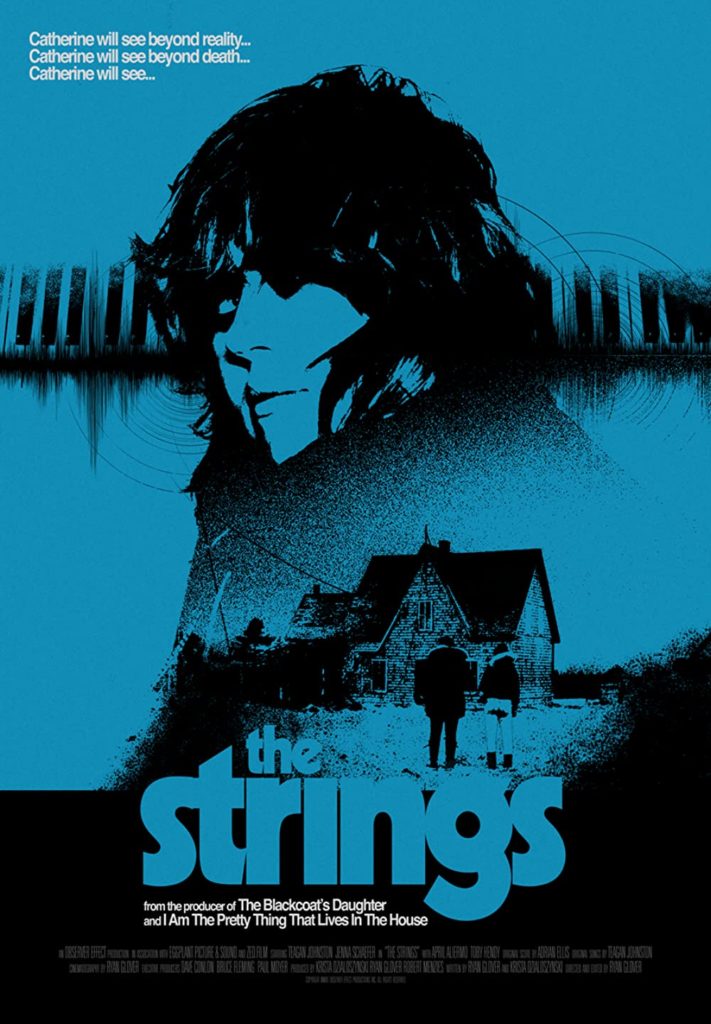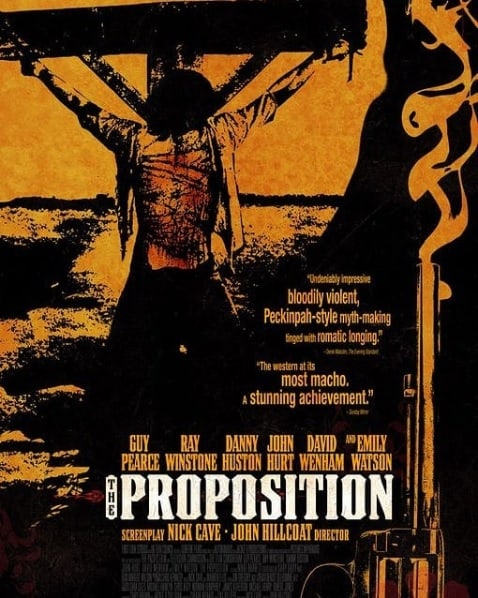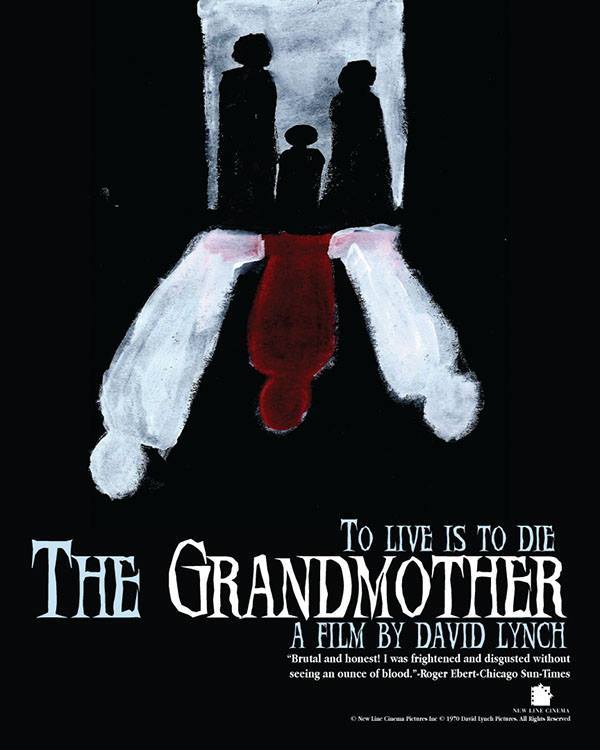
Directed by Ryan Glover, and written by Glover and Krista Dzialoszynski, The Strings is a work of pure atmosphere and mood. In the deep of winter, a lone musician heads off to a cabin to work on new material; while there, she not only finds herself haunted by internal turmoil, but by that of a supernatural presence. The score is composed and produced by Adrian Ellis, with original songs composed and performed by Teagan Johnston (who plays protagonist Catherine). At the core of The Strings is the inner hurt that is consuming Catherine, which Ellis and Johnston brilliantly capture.
The Strings is best acknowledged as a concept work: while there is a narrative and a progressing plot, the pace can crawl for great periods of time, with a greater emphasis on mood telling the story rather than action moving things along. Here is where, alongside visuals, the score kicks in to convey Catherine’s state of mind. Apparently composed entirely using a combination of layered solo voices (from Ellis and Johnston) as well as a 16-piece choir that’s both gentle and intense, the film invites listeners to take in soundscapes that exude a mesmerizing, haunting essence.
From the beginning of the film, there is a faint blue hue to all the scenes, which in turn acts as a visual indicator of the coldness Catherine experiences. The opening scene drops the audience onto a beach – barren and chilly – where a lone man with bloody hands confronts us. As the camera pans across the beach, a great droning static plays out. Accompanied by choir vocals, the static, in an industrial-esque ringing, builds up and becomes more abrasive by the second. The following scene, however, has little in common with the beach scene; while the choir makes a return, we get a droning ambiance that is relatively more serene as Catherine takes off for a long drive. This plays throughout Catherine’s driving, stopping only when she has stopped at a motel and kicking back in once she is driving again. In these two sequences, we hear how The Strings intends to present the audience with auditory detail. Catherine at times may vocally share her current state of emotions, but it is via the score that the audience comes to grasp the severity of her sorrow.
A great deal of The Strings’ score is ambiance, with touches of melody and industrial unease. At times, the score will lean into more industrial-focused compositions that aim to layer on an additional creepy vibe to a particular locale. That said, much of the music is abstract, primarily involving electronic elements to offer a surreal, almost psychedelic power. The film uses these qualities to further elevate the loneliness and dread Catherine is going through. Somber droning and melancholic melodies are used to convey when she is feeling lost, struggling to create art or, ironically, when she is channeling her sorrow into her art.
Much of Catherine’s material leans into noise-like, electronic ambiance. This doubles as a vehicle to express anger, frustration, and sadness as well as something serene and relaxing. It has a hypnotic flow, playing into the cold and empty physical spaces that make up most of the film’s locales. When Catherine plays music for a crowd, and in particular a girl named Grace (Jenna Schaefer), the tranquil side of her music emerges. Touches of distortion and ambient droning are still taking place, but her music’s serene qualities are at the forefront, as compared to the darker tones presented otherwise. So, while the score works to convey Catherine’s emotions when she is out and about, it’s even more effective when we hear the music that she plays and creates because of how much more intimately it ties to her character.
“The Strings” is the prominent original song and, given its placement towards the end, it very much sums up the haunting quality of the film. A lot of the action that takes place in The Strings is abstract: in how Catherine has difficulties creating art and languishes instead, or in how there will be a supernatural happening taking place just beyond her view and, little by little, things appear to be unraveling. The score captures this uneasiness through droning and unnerving ambiance, allowing the viewer some reprieve via gentler compositions, all before dropping them back into psychologically disturbing, supernaturally driven noise.
About the Author: Michael Pementel is a journalist based in Chicago. With a focus on games, movies, and music, one of his favorite subjects to write about is psychological horror. Having written for Consequence of Sound, Electronic Gaming Monthly, and currently writing for Bloody Disgusting, his goal is to write about the power stories have to shape our lives.



